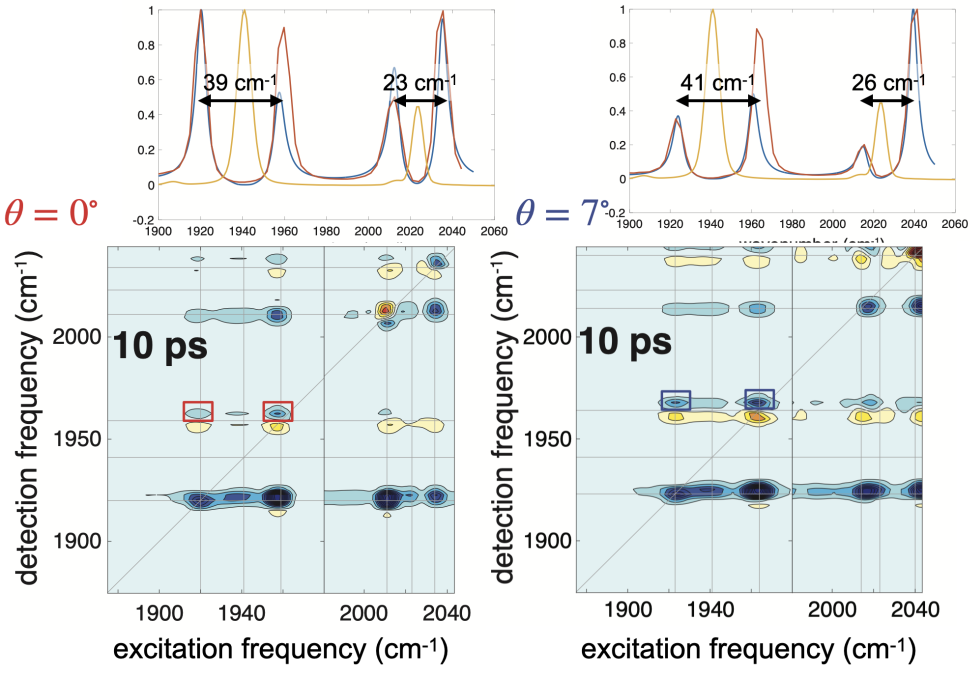Vibrational Polariton Dynamics Probed with 2D-IR Spectroscopy
Kevin Kubarych University of Michigan
Rong Duana, Joseph N. Mastrona,b, Yin Songb, Kevin J. Kubarych
(a) Department of Chemistry, University of Michigan, Ann Arbor, MI
(b) Department of Physics, University of Michigan, Ann Arbor, MI
We will present our efforts to understand vibrational strong coupling and the resulting ultrafast dynamics in both single and dual-mode scenarios. We have found subtle issues in the role of weakly coupled molecules in producing nonlinear spectral contributions that can mask the interesting polartion and dark state signal. We have attempted to resolve the question of the importance of so-called “Rabi contraction” by implementing a double-quantum coherence sequence that accesses vibrational polaritonic states without producing excited state populations. Last, we present “dual-mode” polartions (Fig. 1) where we couple distinct vibrational states to different optical cavity modes, and use 2D-IR to track the coupling of these two polaritonic subsystems. The dual-mode polaritons have distinct dark state reservoirs which are themselves coupled (anharmonically though the bare molecules), providing an interesting new dimensión of polariton dynamics.

Figure 1. FT-IR and fully collinear 2D-IR spectra of dual mode polaritons formed by coupling two different molecular transitions to two adjacent cavity modes. Angle dependent hybridization leads to change in the spectra and the dynamics. Cross peaks between the two polariton branches indicate coupling through the shared common ground state.